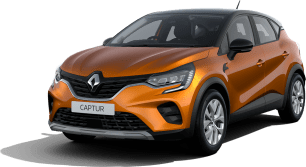This largely depends on what you value in a vehicle.
The Captur II range is four-tiered, kicking off with the base Life from $31,300, followed by the Zen from $33,300, luxury Intens from $38,300 and sporty RS Line, as tested, from $40,800. All prices quoted here are before on-road costs unless otherwise stated.
The bad news is, amongst most direct competitors, the RS Line seems needlessly expensive.
Cheaper direct rivals with a similarly sporty bent include the Kia Stonic GT-Line (from just $30,490), Toyota Yaris Cross Urban (from $32,990), Ford Puma ST-Line V (from $35,890), Mazda CX-3 Akari FWD (from $37,190) and Skoda Kamiq Monte Carlo (from $37,590), while even the all-wheel drive (AWD) options of the Yaris Cross (yes, the hybrid too) and CX-3 still come in below the Renault.
In the Captur’s defence, with a high-output turbo engine, it does offer either more power and/or more torque than all of the above.
But then so do some substantially larger small SUVs that still haven’t breached the $40K barrier, like the rapid Hyundai Kona N-Line and Kia Seltos Sport+ AWD turbos, Mazda CX-30 G25 Touring SP, Mazda MX-30 G20e Touring Vision and Citroen C4 Shine. The Citroen seems like a conspicuous bargain, actually, since it easily undercuts the related Peugeot 2008 GT (now from $43,397). Maybe the now less-irked-with-Australia Emmanuel Macron turned the other cheek in that instance.
So, is the Renault bundled out at the first round? No, for the Captur is one of those rare cars that succeeds in justifying its premium pricing with tangible benefits, ones that become apparent with exposure.
More on those later, but collectively the Renault might embarrass costlier yet largely less well-equipped base posh equivalents like the Lexus UX200 Luxury (from $44,445), Mini Countryman Cooper Classic (from $45,000), Audi Q2 35 TFSI (from $45,200), BMW X1 sDrive18i (from $47,900) and Mercedes-Benz GLA 200 (from $60,688).
It’s also at least a relief to hear that the RS Line has almost everything you’d expect in a high-priced small SUV.
On the safety front, this means autonomous emergency braking (AEB) with pedestrian and cyclist detection, Forward Collision Warning system with Safe Distance Warning, Lane Departure Warning, Lane Keep Assist, Blind Spot Warning, Rear Cross Traffic Alert, Traffic Sign Recognition, adaptive cruise control with full stop/go, a surround-view camera, front/side/rear parking sensors, Hill Start Assist, LED headlights/daytime driving lights and tyre pressure monitors.
Other goodies include a 9.3-inch portrait touchscreen, DAB+ digital radio as part of a six-speaker premium audio system, wireless smartphone charger, four USB charging ports and two 12V sockets, multi-screen digital instrumentation, satellite navigation, keyless entry/start, walkaway locking, auto high beam, auto self-parking, auto folding mirrors, myriad-choice ambient interior lighting, sliding front centre armrest console with storage, rear-seat air vents, sliding rear seats, heated steering wheel and rear-seat privacy glass.
These come on top of climate control air-conditioning, paddle shifters, Bluetooth telephony and audio streaming, Apple CarPlay/Android Auto, auto on/off headlights and wipers, electric park brake with auto hold, auto up/down electric windows all-round and illuminated sunvisor mirrors.
Being an RS Line, it also gains contrasting stitching on part-cloth/part leatherette (vinyl-like) seat upholstery, dark grey trim with soft-touch material on dash and door panels, red dash trim, chrome door sills, alloy pedals, RS badges, grey body trim, dual chrome exhaust tips, a unique front bumper and 18-inch alloys with a temporary spare wheel.
Weirdly, while the $2500-cheaper Intens grade includes heated front seats and driver’s seat lumbar support, the RS Line does not. Plus, no Captur features the front cross-traffic alert, intersection braking or front centre airbag tech that some newer (post-2020) rivals do.
Overall, though, the RS Line delivers on specification.






